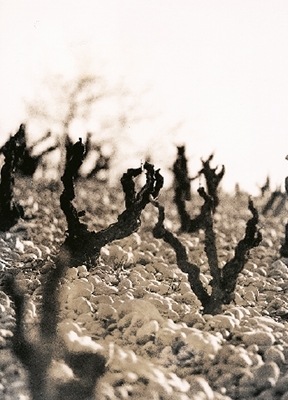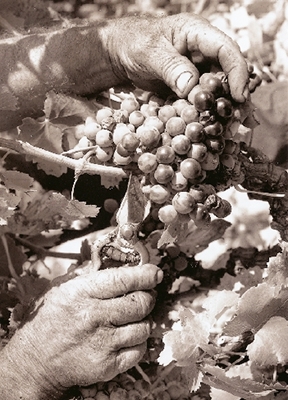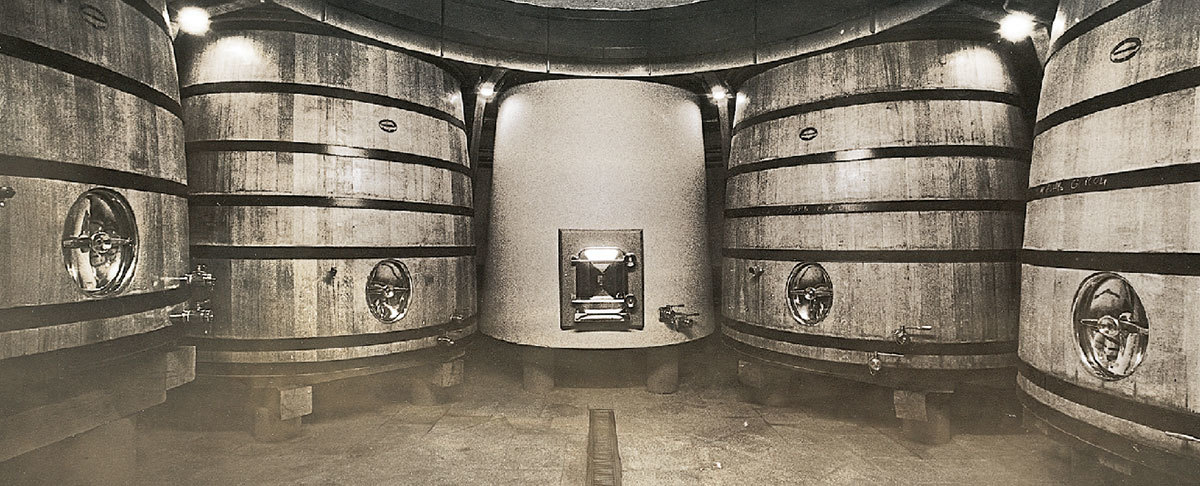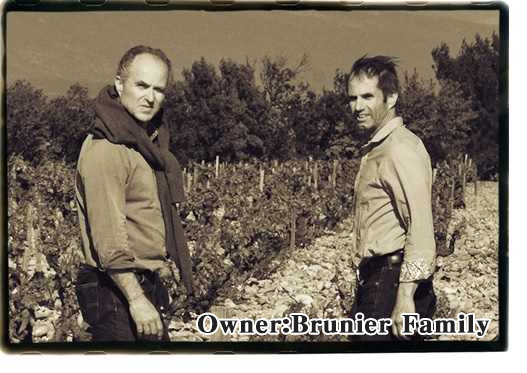Description
Domaine Du Vieux Telegraphe Vignobles Brunier Chateauneuf du Pape 2007《ZTF687D》
Region : Chateauneuf du Pape AOC
Grapes : 65% Grenach、 15% Mourvedre 、 15% Syrah & Cinsault & Clairette、 5% Others
Alcohol : 14.5%
Website: https://www.vieux-telegraphe.fr/
Owner:Brunier Family
📜 Multiple vintages: 2017 & 2016
🌟 70 years old vines
🌟 Organic Farming
🌟 Robert Parker included Vieux Telegraphe in his book <The World's Greatest Wine Estate>
🌟 Robert Parker "Vieux-Telegraphe is unquestionably one of Chateauneuf du Pape's most famous estates!"
🌟 Kermit Lynch "One cannot think of Chateauneuf-du-Pape, the most celebrated cru of the southern Rhone, without thinking of Domaine du Vieux Telegraphe!"
🌟 the greatest wine made at this property since the 2005 and 1998.
🌟 Outstanding Vintage for 2007 Chateauneuf du Pape - Vintage Score - Wine Advocate 98 pts
🏅 Wine Advocate 97 pts (RP本尊親評)
🏅 Jeb Dunnuck 96+ pts
🏅 Wine Spectator 96 pts
🏅 Decanter 96 pts
🏅 Vinous 94 pts
🏅 Wine & Spirits 94 pts
🏅 Vivino 4.4

HISTORY
It was Henri Brunier who penned the first chapter of this wonderful family story in 1891, in the village of Bedarrides, well known today as occupying the southeastern portion of the Chateauneuf-du-Pape AOC area. In that year, he gifted to his son Hippolyte some plots of land on La Crau, a place in those days considered practically unfit for cultivation, its soil a thankless proposition due to a high density of pebbles.
The latter planted his first vine stocks on this commanding plateau, where grapes had first been grown in the 14th century; and where, in 1821, Claude Chappe, inventor of the optical telegraph, built one of his signal towers. Hippolyte’s son, Jules, extended the estate to 42 acres and aptly named the fruits of his labours “Vieux Telegraphe”.
At the end of the Second World War, Henri, the second thus named and the fourth generation, had the formidable task of reviving the estate and shaping its destiny. Not content with enlarging the Domaine to a single expanse of 136 acres, he gave this classic Chateauneuf-du-Pape wine its full dimension, creating a “Vieux Telegraphe” style and positioning it on all the world’s leading markets.
Since the early 1980s his two sons, Frederic and Daniel, have been tending to the family concern. They now farm 247 acres in the Chateauneuf-du-Pape AOC area, and 49,5 acres of IGP Vaucluse and AOC Ventoux vines. Domaine Les Pallières must also be listed: acquired in 1998 in partnership with family friend Kermit Lynch, this single-plot 309-acre estate in Gigondas has 62 acres of vines.
The year 1998 also marked the creation of Massaya in Lebanon in association with Sami and Ramzi Ghosn, which now makes wines from 123 acres of vines, planted mainly in the northeast Beqaa Valley.
After more than 125 years in existence, the Domaine and its associated vineyards, guided by the fifth and the sixth generations of vignerons, have kept all of its initial philosophy very much alive.



CULTIVATION
Our philosophy? Organic-raisonne and sustainable grape-growing. Whether our team of vignerons are labouring on the hot Plateau of La Crau, in the lieux-dits of Pignan, La Roquète and Piedlong, or on the cold steep slopes in the district of Les Pallières, they are driven all year round by the conviction that the grapes should be able to thrive and be picked in the best possible conditions.
Fine fruit is essential for a fine vintage. To achieve this, they are quick to tailor each task to each parcel of vines: for instance, pruning, the spreading of organic manure and traditional ploughing are winter chores that may seem straightforward at first glance, but in fact demand great care. In springtime and summer, the same applies for the debudding, done by hand, and the removal of surplus unripe grapes and surplus leaves; balance is everything, and practically each vine enjoys its own.
The treatments effected during the vegetative period respect the rules of organic agriculture and are also raisonnes, in order to meet two main goals:
- zero residues in the wines
- minimal external pollution
To fight vine moths (eudemis and cochylis), since 1997 we have used the technique known as “sexual confusion”. This simply involves saturating the vineyards with female pheromones, so that the disoriented male butterfly has great trouble in mating. The result? Fewer grape worms and healthier grapes, naturally. Harvesting, lastly, illustrates perfectly our philosophy of respect for tradition: the grapes are picked by hand and sorted twice, so that our winemakers receive the healthiest possible fruit. One last detail, which is indispensable to the concepts of terroir and AOC classification: we do not irrigate our vineyards.
Climate, mistral, historic grape varieties, soils, human intuition, exposure…
The personality of a terroir is a magical mixture of natural and human traits that suffices in itself to unveil an expression, or to convey a feeling, that no oenological technique can yet reproduce.

MATURING WINE
Just as the family have a vine-growing philosophy, we also have one about the vinifying and maturing of wine. The principal idea is to observe the grapes carefully, try to pinpoint a path to follow during vinification, and thus craft a vintage that reflects the year’s climate and events. Later, we also tailor maturation to the structure of the wines. Personality and balance are the two watchwords that influence our decisions and actions. The very exact scheme of traditional fermentation observes the customs of the local AOC: destemming, capmoistening, temperature management, cap-punching, fermentation time and a host of other parameters are adapted, adjusted and reviewed constantly, so as best to meet nature’s requirements and our own expectations.
Making vins de terroir and not recipes wines, wines for the table rather than for tasting, wines whose final quality is attained solely by virtue of their noble means of production - this is our vocation!

(Vintage 2007)
🏅 Wine Advocate 96 pts
The 2007 Vieux Telegraphe may be the greatest wine made at this property since the 2005 and 1998. Dense ruby/purple-tinged with an exquisite nose of salty sea breezes, licorice, ground pepper, jammy black cherries, black currants, figs, and plums, this is a full-bodied, rich, Provencal-styled offering with lots of sweet, ripe tannin. It is surprisingly accessible for a Vieux Telegraphe (this wine normally shuts down several years after bottling), but it should have great longevity (25+ years) given its power, full-bodied mouthfeel, and enormous length and richness. This is a brilliant effort from brothers Frederic and Daniel Brunier.
🏅 Jeb Dunnuck 95+ pts
From magnum, the 2007 Domaine du Vieux Télégraphe Châteauneuf-du-Pape La Crau sports a deep blood red color to go with its decadent, ripe aromatics. Licorice, hot stone, meat juices, and roasted garrigue come jumping from the glass and the fruit leans towards the plum/raspberry liqueur spectrum. Beautiful on the palate, the wine is full bodied and lavishly textured, possesses loads of ripe fruit, impeccable balance and a long, focused finish. Very approachable now (and I thoroughly enjoyed this bottle) it continues to flesh out with air, gaining both depth and richness. Given the track record of this estate, I don’t see any reason this won’t drink well for 20+ years. Simply a stunning bottle of wine.
🏅 Wine Spectator 95 pts
Packed, in a brawny, muscular style atypical for this lush vintage, with a gravelly undertow to the currant paste, braised fig and dark licorice notes. Picks up even more steam on the finish, with grilled mesquite, mineral and garrigue notes and a long, hot stone¿filled finish.
🏅 Vinous 93 pts
Glass-staining ruby. Highly pungent bouquet offers black fruit compote, olive and floral qualities, along with a slightly high-toned quality that recedes with air. The palate-coating, deeply concentrated cassis and blackberry flavors display a slow-mounting spiciness. Pretty powerful for a wine from this estate, showing more heft and dark fruit character than usual. The finish is broad, velvety and impressively persistent. Long-time fans of this property's usually elegant style might not be over the moon for this wine's virility.
Free delivery in Hong Kong for orders of 6+ bottles of wine, 3+ bottles of sake/spirits, or orders over $1,200;
Otherwise, $80 delivery fee per order (except remote areas) or free showroom pick-up during office hours.














